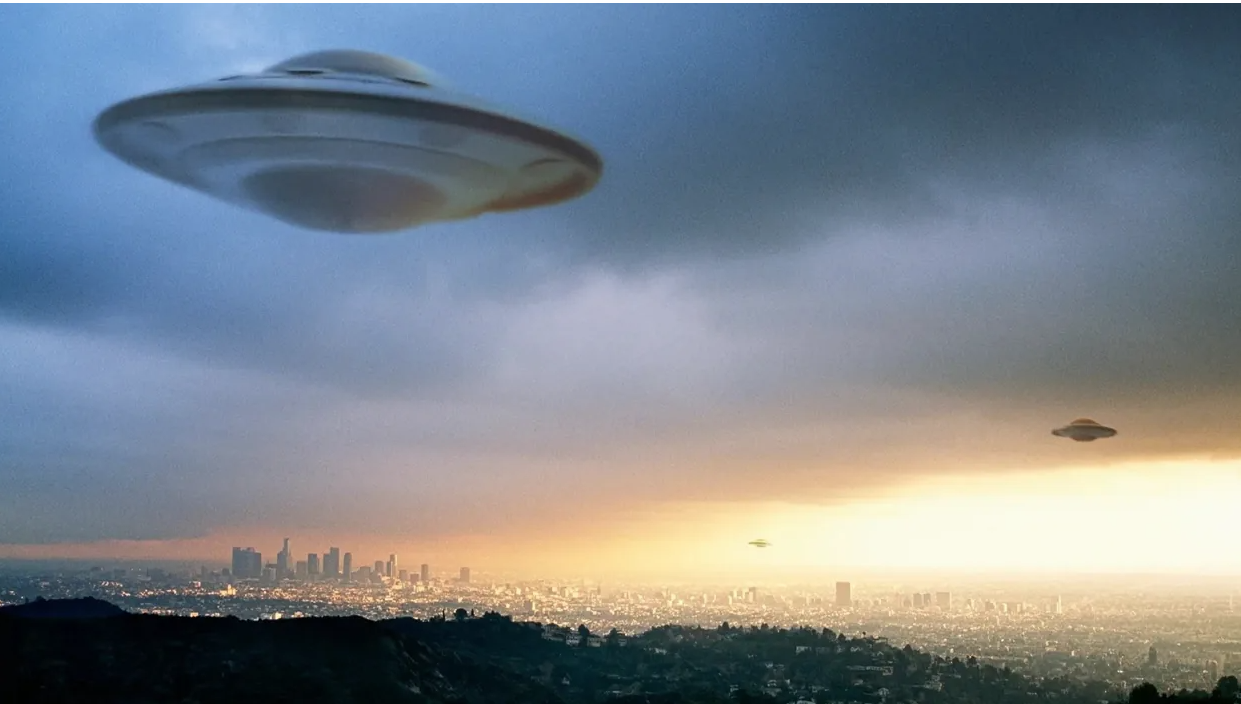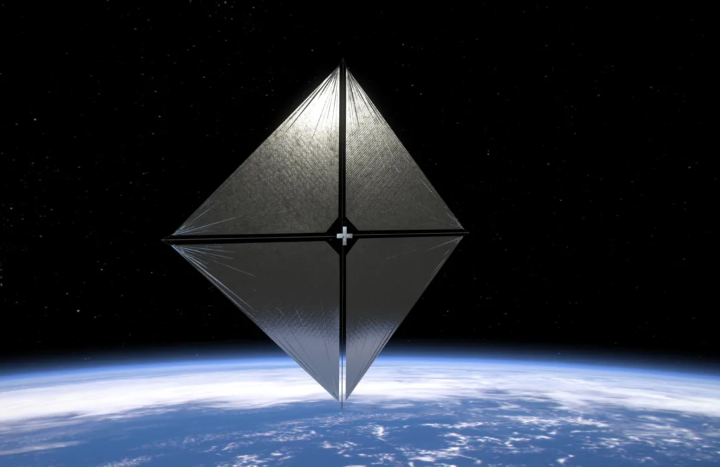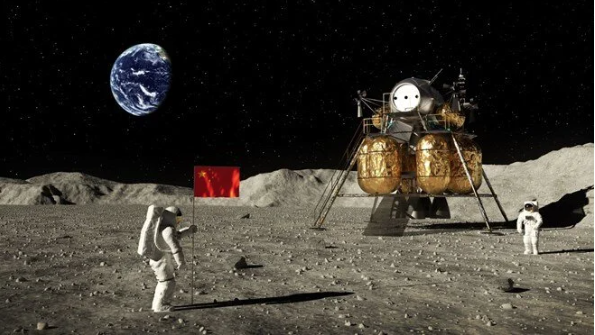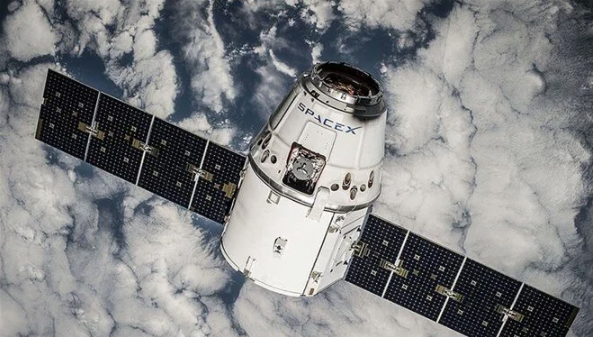These UFO mysteries intrigue even NASA!
‘There are some really amazing things that people don’t believe exist’
It was a normal flying day for Alex Dietrich. He was near San Diego, soaring over the vast expanse of the Pacific Ocean. The lieutenant commander of the US Navy was on a training mission in an F/A-18F Super Hornet fighter jet with a colleague in another aircraft. Then a voice came over the static of the radio.
An operations officer aboard the battleship USS Princeton was asking them to investigate a suspicious object flying around. The object, seen several times at an altitude of 24.2 kilometers, had suddenly dropped close to the sea and disappeared.
By the time the two jets reached the object’s last known position, the water was almost boiling. A few minutes later, Dietrich saw a whitish, rectangular object about 12 meters long. It looked like a wingless capsule, hovering just above the water. As soon as the pilots approached, it accelerated skyward at a seemingly impossible speed and disappeared without a trace.
Recorded in 2004, this was the infamous “Tic Tac” incident (so named because the unidentified object was likened to a Tic Tac candy bar) that went viral after a video taken by advanced surveillance equipment on one of the aircraft was leaked to the New York Times. In the footage, which has been authenticated by the US Department of Defense, the object, seen as a rectangular shadow in the bright sky, slides to the left with incredible speed and goes off-camera.
This is just one of hundreds of strange events that have fallen into the hands of official authorities in recent years. First there was the US government’s 2021 assessment of UFOs. Now NASA is expected to release the results of its first study on Unidentified Anomalous Phenomena, and the US Congress’ Subcommittee on Homeland Security, Border and Foreign Affairs is holding a hearing on the subject.
America’s obsession with aliens has been going on for nearly 76 years. During that time, the country has been awash with reports of flying saucers, strange lights and the mysteries of Area 51. Now the scientific community is finally taking responsibility. But how do you separate conspiracy theories from cases worth investigating? What distinguishes a real anomaly from a simple airplane? And then there is the question: Why are researchers paying attention now?
The obvious pattern shared by UFO reports
In the summer of 1947, a new and strange wave of hysteria swept the United States. From California to Maine, from Michigan to Texas, people began to report seeing unusually shaped objects in the sky with a characteristically flat, disk-like appearance.
It all started with an aviator and businessman from Idaho. Kenneth Arnold was searching for a military plane that had crashed in a single-engine CallAir A-2 aircraft when he saw a flash at an altitude of 3,048m over the Cascade Mountains in Washington one June day. Nine objects that looked like shiny disks were somersaulting, tilting, and settling into a pattern in the sky. Arnold watched the objects pass rapidly from one peak to another and calculated that they must have been moving at an incredible speed (1,931km/h). This was more than twice the speed of the then record holder. This incident marked the beginning of America’s fascination with the flying saucer.
According to the newspaper archives of the US Library of Congress, there had been no mention of flying saucers in the Earth’s atmosphere in any US newspaper since records began in 1770. But within a month of Arnold’s report, dozens of flying saucer sightings were reported across the country. Initially dismissed by experts as a “made-up story”, it soon caused a national panic.
Take the Covid-19 pandemic. Experts analyzing the number of UAP (unidentified aerial phenomena) sightings across the US found that there were large increases in reported UFO sightings during curfews. According to the researchers, these spikes during the pandemic are a direct result of people paying more attention to the sky. This idea is supported by the finding that sighting increases gradually increase after each lockdown. When we need distraction or are bored, we are more likely to think of suspicious objects.
However, the US government’s 2022 UAP assessment revealed a significant increase in the number of sightings since the first iteration emerged in 2021. More than 350 sightings were reported in just one year, compared to 144 cases in the entire 17-year period covered by the first report. So much so that some are calling it “a new era of UFO mania”.
Ambiguous objects gain meaning according to people’s point of view
However, very few UAPs turn out to be truly anomalous. Of the nearly 800 UAP observations Nasa has investigated, only 2 to 5 percent have so far remained unexplained. According to David Spergel, head of the Simons Foundation and Nasa’s unpublished UAP study, many of the cases can be easily divided into two categories.
The first are everyday objects and events, such as balloons, drones, atmospheric phenomena and anomalies within the camera itself. Whenever Spergel hears of a suspicious event involving flashing lights, he knows it is most likely to be caused by airplanes. “We only put flashing lights on things that we want to be seen. So when Ukrainians are attacking Russian trenches or Russians are attacking Ukrainian cities, they don’t put flashing lights on their drones or military aircraft,” he says.
The second category was created by a funny mistake that happened to British astronaut Tim Peake in 2015. During a 186-day journey aboard the International Space Station (ISS), Peake looked out the window and noticed that the lights were moving in a pattern. First he saw three, then four. Later, on a BBC program, he said he was “astonished”, believing he was seeing alien spaceships.
“We just put flashing lights on things we want to be seen.
But Peake soon learned that he wasn’t looking at distant objects, but tiny droplets. They were Russian urine that had leaked from a nearby rover and instantly froze into crystals that reflected light. Often the mundane is made interesting by simple optical illusions that alter reality, as in this case. But without a second image from another camera, it can be extremely difficult to confirm the nature of these objects. “I think the first thing we’re doing is advising Nasa to make it easier to collect and share quality data,” Spergel says.
Spergel explains that the ideal scenario is to have an image of an object taken by several cameras at the same time. This would allow researchers to confirm that the object actually exists and combine the camera data to determine its distance, position and velocity. This is particularly important because many UAP observations contain unexplained acceleration.
“If you can complement these images with radar data, then you can get multi-wavelength data and learn more about the properties of the object. As we get more data, it will become clear that this is actually something ordinary. But the really exciting possibility is that it could be something we don’t understand.
The mystery of “Oumuamua
In October 2017, astronomers using the Pan-Starrs1 telescope perched among the clouds on Mount Halealakalā in Hawaii noticed something strange. A mysterious object was moving so fast that it could have come from outside our solar system. The object, called “Oumuamua”, was getting faster and faster: By November, it was moving at about 38.3 kilometers per second.
Comets are usually accelerated as they pass by the Sun, pushed along by the vaporized ice that forms its tail, but this object had no tail. Scientists were stunned. Was this just an unusual comet? Or could it be something else?
#Oumuamua is the first object ever seen in our solar system that is known to have originated elsewhere. Here’s what we know (and don’t know) about this mysterious visitor: https://t.co/xemx7kXesx pic.twitter.com/neeoWoSSzy
— NASA (@NASA) July 3, 2018
Theoretical physicist Avi Loeb, a professor at Harvard University who has since gained a reputation as a controversial “alien hunter”, suggested that it could have been an exploration craft sent to Earth by an advanced extraterrestrial civilization.
While the current consensus is that Oumuamua was most likely a natural object, the object had all the characteristics of a real UAP. “If we saw an object coming into the solar system at half the speed of light and then slowing down, that would be incredibly impressive,” Spergel said, pointing out that Earth’s speed is only 10 thousandths of the speed of light.
Spergel thinks about this in terms of timelines. Most of the stars around our own solar system are at least a billion years older or younger than our Sun. Assuming it would take them roughly as long as it took us to produce monkeys capable of sending themselves into space, life elsewhere could consist of complex microorganisms like those found in billion-year-old rocks. On the other hand, the technologies of mind-bogglingly advanced civilizations may be far beyond our comprehension.
Spergel said, “It’s good to think about what even 100 million years means. If you showed someone from 1923 the conventional technology of today, airplanes, cars, they would be impressed but not shocked,” Spergel explains. “On the other hand, if you showed all this to someone from 1023, they would think we are all witches. A thousand years is a big step forward in technology. 100 million years is 100 thousand steps like that.
Unexplained weather phenomena
Of course, NASA does not expect to find evidence of visits by intelligent aliens. Instead, the report is an opportunity to conduct a kind of sky audit and investigate what has been happening around Earth recently. This search includes rare weather events that for centuries have been nothing more than rumors. Take the red lightning bolts known as sprites, which are actually large electrical discharges that light up the Earth’s upper atmosphere with strange red spots and streaks. Occurring above thunderstorms, red lightning has been regularly reported since 1886.
“There are some really amazing things that people don’t believe exist,” Spergel says, explaining that despite anecdotal reports, scientists remain skeptical about the spectra. “It took the development of high-speed cameras for them to be believed,” he says.
https://twitter.com/coloradolifer1/status/1651738199075721216?ref_src=twsrc%5Etfw%7Ctwcamp%5Etweetembed%7Ctwterm%5E1651738199075721216%7Ctwgr%5Eec806483ed2608f3e0f1f4bbfdebadaafb81a167%7Ctwcon%5Es1_c10&ref_url=https%3A%2F%2Ftr.mashable.com%2Fnasa%2F10746%2Fnasa-ufo-kayitlarini-aciyor-sasirtan-gizemler
It’s not just a matter of curiosity, any weather phenomenon that is not well understood can be dangerous for satellites or airplanes. “One of the things that surprises me is that there are so many balloons and drones out there. The numbers are growing rapidly, especially the number of drones,” Spergel said. “Some of them could pose a danger to aviation, so they need to be properly monitored.
Whether it’s strange weather events or reports of possible alien spacecraft, everything depends on having high-quality data to make any progress. The days of squinting at blurry images of possible flying saucers or hazy images of suspicious objects in the sky may soon be over. But Nasa recognizes that they urgently need to remove the black stamp on the UAP concept.
“If I was running the country and someone reported something unusual, I would certainly want to know more about it.
At Nasa’s first public meeting on the UAPs, Nicola Fox, associate director of the Science Mission Directorate, said it was disheartening that study participants were already being bullied online for their research, which she said was hindering scientific progress and discouraging others from getting involved in the field.
“I hope that one of the outcomes of the study will be to reduce the sense of conspiracy,” Spergel said.
But for some, this is what should have been done all along. As Kenneth Arnold told the press in June 1947, “If I were running the country and someone reported something unusual, I would certainly want to know more about it.





